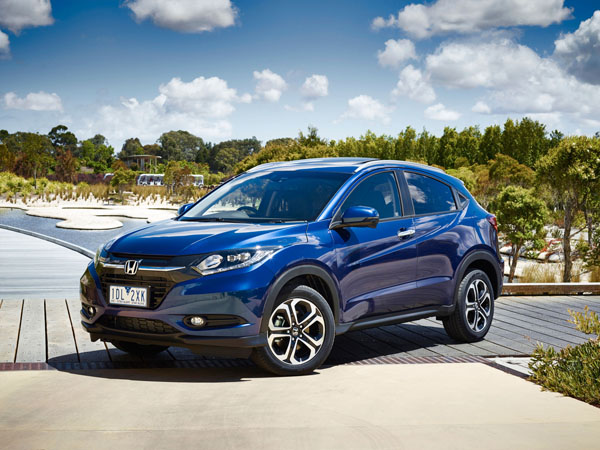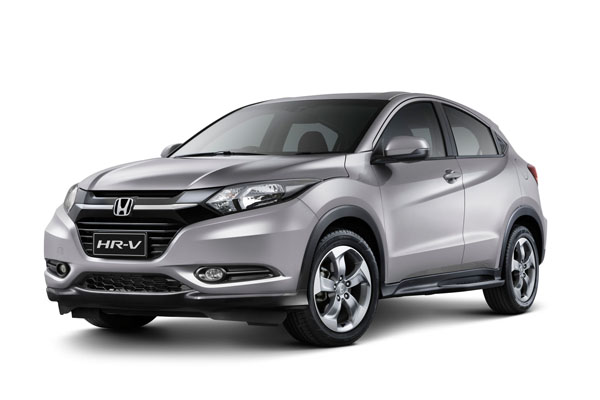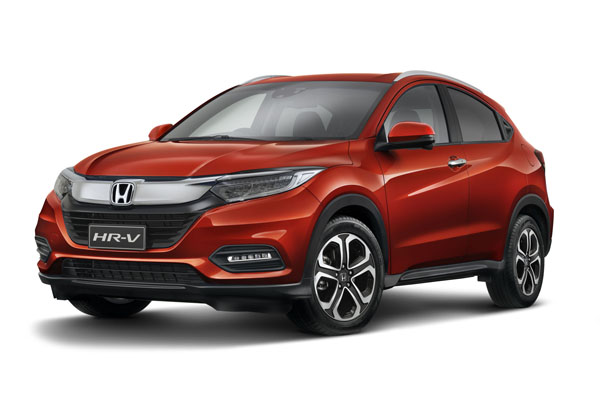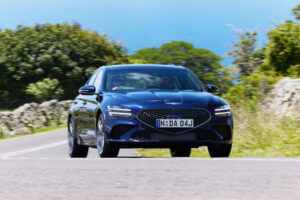
2015 Honda HR-V VTi-L
Honda HR-V has been on sale in Australia since on and off since 1999. We will start our used car checkout in models from February 2015 when a totally new HR-V arrived.
That 2015 model was replaced by a virtually all-new model in early 2021. This has resulted in quite a few of the superseded HR-Vs being traded in on the new one. So, dealer may have found themselves overstocked with the older models and therefore keen to clear them. Meaning prices may have been dropped to clear them.
While previous Honda HR-V models had the SUV look the 2015 had an almost coupe shape. Although it has four passenger doors the hidden handles of the rear doors give the look of a two-door.
Rear leg room is very good for this class, even with the front seats in their most rearward position. Honda’s innovative Magic Seat system enables up to 18 different configurations in seating and cargo-carrying options.
However, the sleek rear end means large boxy items often can’t be loaded. Which is an interesting triumph of style over sense when compared with the original HR-Vs.
The new HR-V is offered in VTi, VTi-S, VTi-L and VTi-LE variants. A new semi-sporty model tagged HR-V RS was introduced in August 2018. It’s aimed at those who enjoy driving and are looking for a little more than sensible transport.
Honda HR-V RS featured 18-inch alloy wheels, a black-chrome grille, honeycomb lower grille and foglight garnish; black door mirror caps; dark chromed door handles and a piano black body kit. Driving dynamics in the RS were improved by sportier damper and spring rates for flatter cornering, extra control and reduced body roll.

2017 Honda HR-V Limited Edition
At the same time as the RS arrived the rest of the HR-V range received a mild facelift and some added safety features, the most important being autonomous emergency braking on all variants.
Honda HR-V is powered by a 1.6-litre or 1.8-litre four-cylinder petrol engine or 1.6 turbo-diesel. The diesel was never popular in Oz and was soon discontinued.
All have a CVT automatic transmission. Over time CVTs have been improved since the original somewhat irritating ones, so the HR-V’s is pleasant enough to sit behind.
Although a relatively tall, high-sided vehicle, the centre of gravity of the HR-V isn’t overly high, stability and cornering are almost to hatchback levels.
The HR-V is relatively small and the underbonnet area is quite crowded, so skinned knuckles are quite common. Please make sure that safety related items are worked on only by professional mechanics.
Honda has been a major player in Australia for many decades and there are dealers not only in the major metro areas but also in country cities and larger country towns.
Spare parts used to be quite expensive but Honda Australia listened to complaints about this and most HR-V items are now line ball in price with its competitors. We haven’t heard of any real complaints about availability of parts.
WHAT TO LOOK FOR
Check under the carpets for signs of dampness as we have heard of some HR-Vs having water entry after high-pressure washing.
Look for signs of damage to the seats, trim and carpets caused by rough treatment from kids.

2019 Honda HR-V
It’s unlikely an HR-V will have been taken onto rough roads as it’s certainly no SUV. If you suspect anything – scratches on doors from bushes, dings on the bumper corners, scuff marks on the wheels, even sand on the underbody either skip the car or call in a professional for a full checkout.
The engine should start within a couple of seconds, a diesel may take a little longer, especially when cold, there may be troubles.
As mentioned, the CVT automatic in the Honda HR-V is generally works well If you feel it’s in the wrong ‘gear’ for the driving conditions there may be problems. Have an expert check out the car of you’re not sure it’s working correctly during your pre-purchase test drive.
RECALLS: To browse recalls on all vehicles go to the ACCC at: www.productsafety.gov.au/products/transport/cars/
HOW MUCH:
Expect to spend from $12,000 to $18,000 for a 2015 Honda HR-V VTi-S or a 2016 VTi; $14,000 to $20,000 for a 2017 VTi-S; $16,000 to $23,000 for a 2017 VTi-L; $18,000 to $25,000 for 2018 RS or a 2020 VTi; $21,000 to $29,000 for a 2019 RS; $23,000 to $32,000 for a 2019 VTi-LX; and $25,000 to $34,000 for a 2021 VTi-LX.










